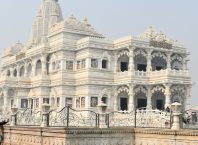Table of Contents
Delhi, the capital city of India, is known for its rich cultural heritage and history, which is reflected in its numerous tourist attractions. New Delhi, the modern part of the city, is home to several iconic landmarks and tourist hotspots. Visitors to the city can explore historic monuments, religious sites, museums, and markets, and enjoy the vibrant culture and cuisine of the city. Here is a list of the 20 top-rated tourist attractions in Delhi & New Delhi:
List of Best Places to Visit in Delhi | Top Tourist Attractions | 2023
1. Red Fort
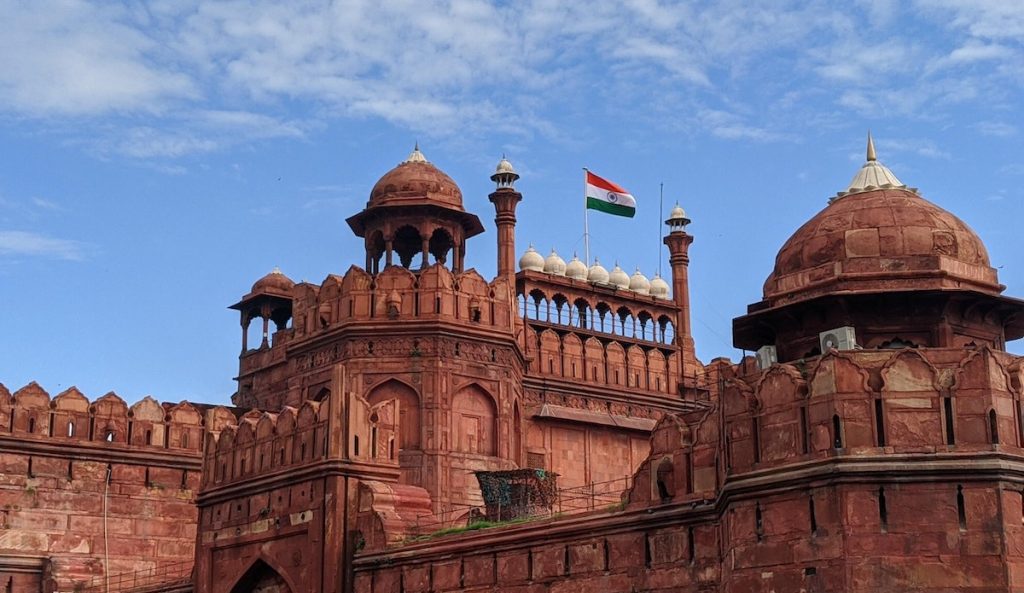
Red Fort, also known as Lal Qila in Hindi, is a historic fort located in Old Delhi, India. The red fort is a UNESCO World Heritage Site and is one of the most popular tourist attractions in Delhi. It was built in the 17th century by the Mughal emperor Shah Jahan and served as the residence of the Mughal emperors until the British colonial era. Today, it is a symbol of India’s rich cultural heritage and a testament to the architectural brilliance of the Mughal dynasty.
History of Red Fort
The construction of the Red Fort began in 1638 and was completed in 1648. It was built using red sandstone, which gives it its distinct color and name. The fort served as the residence of the Mughal emperors for nearly two centuries, until the British took over in 1857. During this time, it was the center of the Mughal empire, and many important events, such as coronations and public ceremonies, were held here. The fort was also the site of the famous Peacock Throne, which was one of the most precious and valuable thrones in the world, adorned with diamonds, rubies, and emeralds.
In 1857, during the Indian Rebellion, the Red Fort was captured by the British, and it remained under their control until India gained independence in 1947. Today, the fort is a symbol of India’s struggle for freedom and a testament to the resilience of its people.
Tourist Attractions at Red Fort
The Red Fort is a popular tourist attraction in Delhi, drawing millions of visitors each year. The fort is renowned for its stunning architecture, intricate carvings, and beautiful gardens. Visitors can explore the various buildings and structures within the fort, such as the Diwan-i-Khas, the Diwan-i-Aam, and the Rang Mahal.
One of the most popular attractions within the fort is the Light and Sound Show, which is held every evening. The show tells the story of the fort and the Mughal dynasty, and is a must-see for anyone visiting Delhi.
Another popular attraction at the Red Fort is the Indian War Memorial Museum, which is located within the fort complex. The museum contains a collection of artifacts and exhibits related to India’s military history, and is a must-visit for anyone interested in the country’s rich heritage.
The Red Fort is also known for its beautiful gardens, which are located within the fort complex. The gardens are a perfect place to relax and unwind, and offer stunning views of the fort and the surrounding area.
2. Qutub Minar
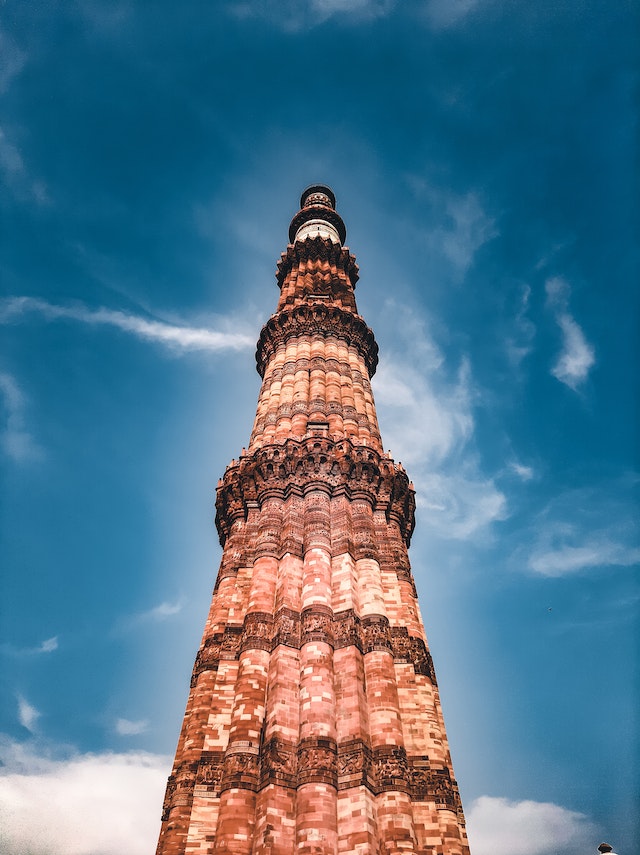
Qutub Minar is a towering minaret located in the Mehrauli area of Delhi, India. It is one of the most iconic and popular tourist attractions in Delhi, drawing visitors from all over the world. The minaret is a UNESCO World Heritage Site and is a testament to the architectural brilliance of the Mughal dynasty.
History of Qutub Minar
The construction of Qutub Minar began in 1192 under the rule of the first Muslim ruler of India, Qutub-ud-din Aibak. The minaret was built to commemorate the victory of the Muslim ruler over the last Hindu king of Delhi, and to mark the beginning of the Islamic rule in India. The minaret was later completed by Iltutmish, who added three more stories to the structure in the early 13th century.
Over the years, Qutub Minar has undergone several renovations and repairs, including after being damaged by an earthquake in 1505. The minaret stands at a height of 73 meters and has five stories, each marked by a projecting balcony. The base of the minaret is made of red sandstone, while the upper stories are made of marble and sandstone.
Tourist Attractions at Qutub Minar
Visitors can explore the various structures within the complex, such as the Alai Darwaza, the Quwwat-ul-Islam Mosque, and the Iron Pillar.
One of the most popular attractions within the complex is the Iron Pillar, which is a 7-meter tall iron pillar that has stood in the complex for over 1,600 years. The pillar is a testament to the metallurgical skills of ancient India and is known for its resistance to rust and corrosion.
Another popular attraction at Qutub Minar is the Sound and Light Show, which is held every evening. The show tells the story of the minaret and the history of India, and is a must-see for anyone visiting Delhi.
The complex also features several beautiful gardens, which are a perfect place to relax and unwind. Visitors can enjoy the stunning views of the minaret and the surrounding area while exploring the beautiful gardens.
3. Humayun’s Tomb
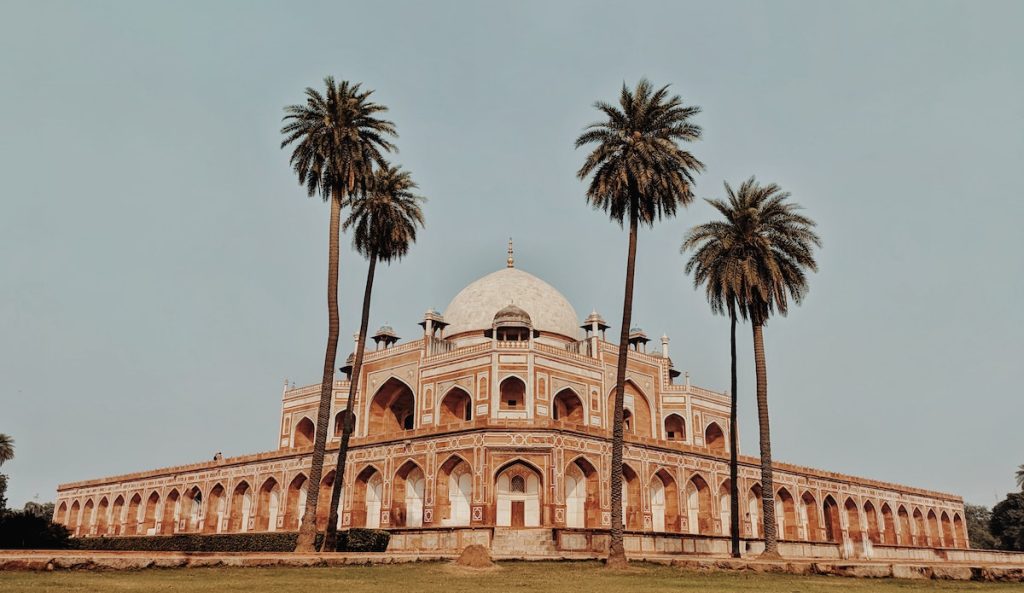
Humayun’s Tomb is a magnificent mausoleum located in the Nizamuddin East area of Delhi, India. It is one of the most iconic and popular tourist attractions in Delhi, drawing visitors from all over the world. The mausoleum is a UNESCO World Heritage Site and is a testament to the architectural brilliance of the Mughal dynasty.
History of Humayun’s Tomb
The construction of Humayun’s Tomb began in 1565, nine years after the death of Mughal Emperor Humayun. The tomb was commissioned by his widow, Empress Bega Begum, who wanted to create a fitting final resting place for her husband. The mausoleum was designed by Persian architect Mirak Mirza Ghiyas and is considered to be the first garden tomb in India.
Over the years, Humayun’s Tomb has undergone several renovations and repairs, including a major restoration project in the 20th century. The mausoleum stands at a height of 47 meters and has several structures within the complex, including the main tomb, a mosque, and several other smaller tombs.
Tourist Attractions at Humayun’s Tomb
Visitors can explore the various structures within the complex, such as the main tomb, the mosque, and the smaller tombs.
The main tomb is the centerpiece of the complex and is known for its beautiful dome and intricate carvings. Visitors can explore the tomb and pay their respects to Emperor Humayun, who is buried there.
Another popular attraction at Humayun’s Tomb is the Charbagh garden, which is a beautiful garden that surrounds the tomb. The garden is divided into four parts, and is a perfect place to relax and enjoy the beauty of the surroundings.
The complex also features several other smaller tombs, including the tombs of Empress Bega Begum and other members of the Mughal royal family. Visitors can explore these tombs and learn about the history of the Mughal dynasty.
4. India Gate
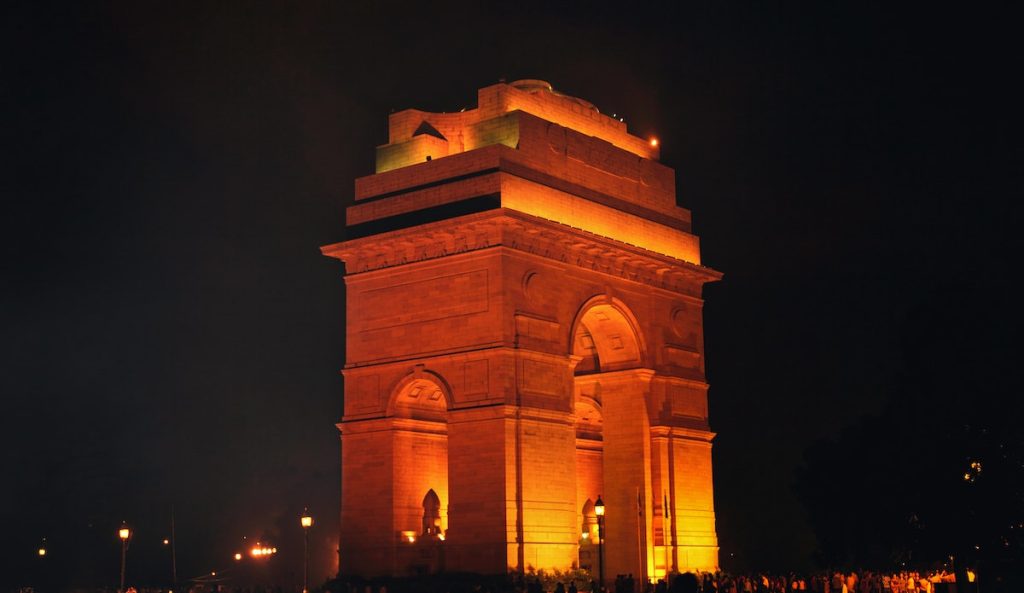
India Gate is an iconic landmark and a popular tourist attraction located in the heart of Delhi, India. It is a war memorial that was built in memory of the Indian soldiers who lost their lives fighting for the British Indian Army during World War I. In this article, we will explore the history of India Gate and why it is a must-visit destination for anyone visiting Delhi.
History of India Gate
The construction of India Gate began in 1921 and was completed in 1931. It was designed by British architect Edwin Lutyens, who was also responsible for designing several other prominent buildings in Delhi, such as the Rashtrapati Bhavan and the Parliament House. The monument is made of red and yellow sandstone and stands at a height of 42 meters.
The names of the 13,218 Indian soldiers who lost their lives fighting for the British Indian Army during World War I are inscribed on the walls of the monument. In 1971, an eternal flame was lit under the arch of India Gate to commemorate the soldiers who lost their lives in the Indo-Pakistan War of 1971.
Tourist Attractions at India Gate
India Gate is a popular tourist attraction in Delhi, drawing visitors from all over the world. The monument is renowned for its stunning architecture, beautiful surroundings, and historical significance. Visitors can explore the monument and pay their respects to the soldiers who lost their lives during World War I and other wars.
The area around India Gate is a popular spot for picnics and leisurely walks. The lawns around the monument are well-maintained and provide a great place to relax and enjoy the beauty of the surroundings. The monument is also beautifully illuminated at night, making it a popular spot for evening strolls and photography.
Read More: Top 20 Best Places to Visit in the World
5. Jama Masjid
Jama Masjid is one of the most famous and impressive mosques in India, located in Old Delhi. The mosque was built by the Mughal emperor Shah Jahan in the mid-17th century and is one of the largest mosques in India. It is made of red sandstone and white marble, and can accommodate up to 25,000 people at once.
The mosque has three gates, four towers, and two 40-meter-high minarets. Tourists flock to Jama Masjid to admire the stunning architecture and experience the spiritual atmosphere of this historic mosque. It is also a popular spot for photography, particularly during sunset when the mosque is bathed in a warm, golden light. Visitors are required to dress modestly and remove their shoes before entering the mosque.
6. Lotus Temple
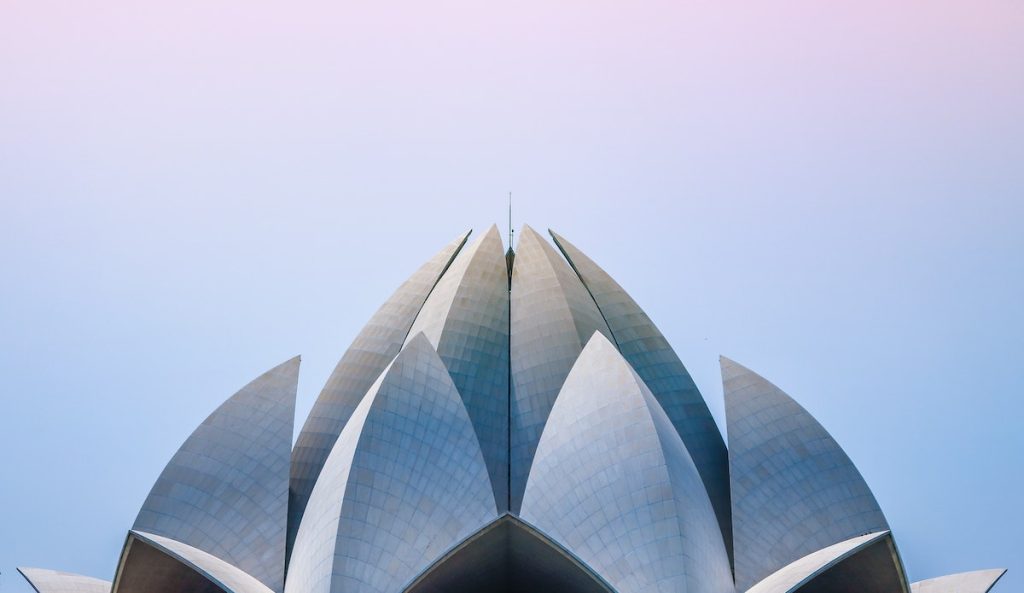
Lotus Temple is a modern architectural marvel located in South Delhi. The temple is shaped like a lotus flower and is made of white marble. It was built in 1986 and has since become a popular tourist attraction in Delhi. The Lotus Temple is the Baha’i House of Worship in Delhi and is open to people of all religions.
The temple has won several architectural awards for its unique design, which was inspired by the lotus flower, a symbol of purity and love in many cultures. The temple has 27 petals made of marble and is surrounded by nine pools of water, which create a beautiful and serene atmosphere.
Visitors can spend time meditating or simply admiring the beauty of the temple and its surroundings. The Lotus Temple is a must-visit destination for anyone interested in architecture or spirituality, and its stunning design and peaceful atmosphere make it a popular spot for both locals and tourists alike.
7. Akshardham Temple
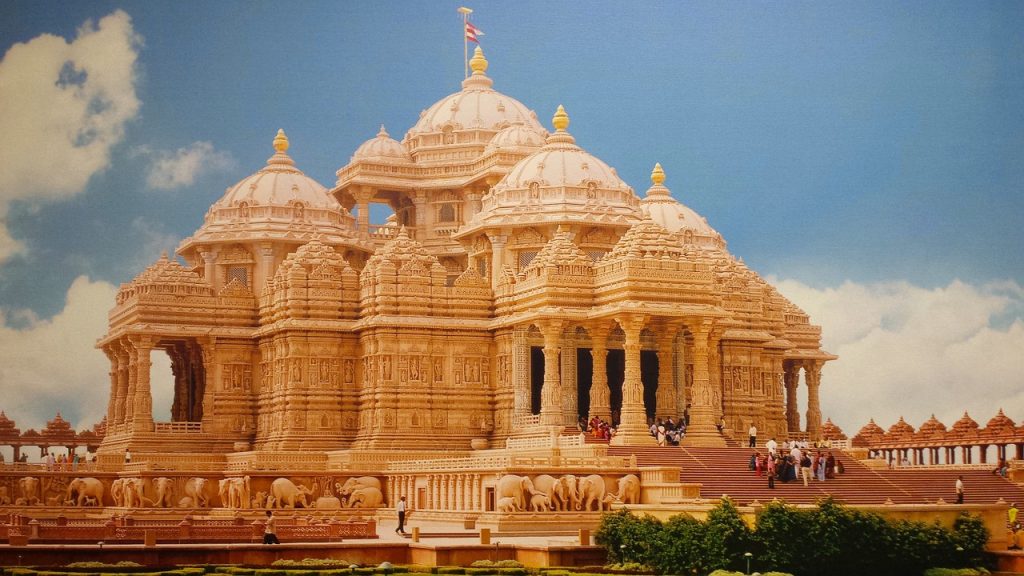
Akshardham Temple is a magnificent Hindu temple complex located in East Delhi. The temple complex is a relatively new addition to Delhi’s long list of tourist attractions, having been opened to the public in 2005. Despite its relatively short history, Akshardham Temple has quickly become one of the most popular tourist attractions in Delhi, drawing visitors from all over the world.
History of Akshardham Temple
The temple complex was built by the BAPS Swaminarayan Sanstha, a spiritual organization that follows the teachings of Swaminarayan, a Hindu saint who lived in the late 18th century. The complex is spread over 100 acres and features several beautifully designed structures, including the main temple, exhibition halls, a musical fountain, and a large garden.
The main temple at Akshardham Temple is a stunning piece of architecture. It is made of pink sandstone and white marble and features intricate carvings and sculptures that depict scenes from Hindu mythology. The temple’s central dome is over 40 meters high and is surrounded by several smaller domes and towers. The temple also features several prayer halls where visitors can spend time in quiet reflection.
One of the most impressive features of Akshardham Temple is the exhibition halls. These halls showcase the rich history and culture of India, as well as the teachings of Swaminarayan. Visitors can explore several interactive exhibits and multimedia displays that provide a fascinating insight into Indian history and spirituality.
Another popular attraction at Akshardham Temple is the musical fountain show. This show features a spectacular display of lights, music, and water, and is a must-see for anyone visiting the temple. The show is held in the evening and is a great way to end a day spent exploring the temple complex.
8. The National Rail Museum
The National Rail Museum is a unique museum dedicated to the history and heritage of the Indian Railways. The museum is located in Chanakyapuri, New Delhi and is spread over 11 acres. The museum was established in 1977 and features a vast collection of historic locomotives, carriages, and other railway equipment. The museum’s collection includes several rare and antique steam locomotives, some of which are over 100 years old. Visitors can also see a variety of vintage carriages, including the personal carriage of the Maharaja of Mysore.
The National Rail Museum is a popular tourist attraction in Delhi because it offers a fascinating insight into the history of the Indian Railways. The museum also features several interactive exhibits that allow visitors to experience what it was like to travel on a train in the past. There is also a toy train that takes visitors around the museum, providing a unique perspective on the exhibits.
9. Chandni Chowk
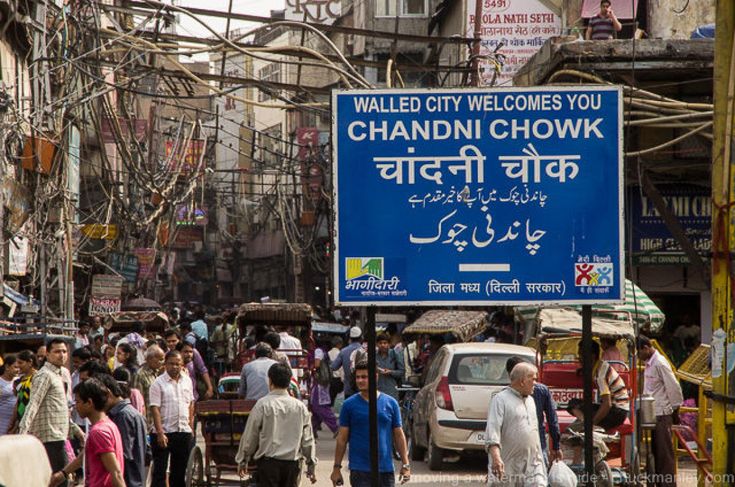
Chandni Chowk is one of the oldest and busiest markets in Delhi, and is a popular tourist attraction in the city. The market is located in Old Delhi, and is famous for its narrow lanes, colorful shops, and delicious street food. Chandni Chowk was built in the 17th century by Mughal Emperor Shah Jahan, and was originally designed as a grand bazaar for the nobility.
Today, Chandni Chowk is a bustling marketplace where visitors can find everything from spices and fabrics to jewelry and electronics. The market is also famous for its street food, with vendors selling a variety of mouth-watering snacks and sweets.
One of the most iconic landmarks in Chandni Chowk is the Jama Masjid, which is one of the largest mosques in India. Visitors can also explore several other historic buildings in the area, including the Red Fort.
10. Raj Ghat
Raj Ghat is a memorial dedicated to Mahatma Gandhi, the Father of the Nation. The memorial is located on the banks of the Yamuna River in Delhi, and marks the spot where Gandhi was cremated after his assassination in 1948. The memorial consists of a simple black marble platform, with an eternal flame burning in his honor. Visitors can also see a museum dedicated to Gandhi’s life and work. Raj Ghat is a popular tourist attraction in Delhi, as it offers a peaceful and reflective atmosphere, allowing visitors to pay their respects to one of India’s greatest leaders.
11. Rashtrapati Bhavan
Rashtrapati Bhavan is the official residence of the President of India and is located in the heart of Delhi. The building was designed by British architect Edwin Lutyens and was completed in 1929. It is one of the largest presidential residences in the world, with over 340 rooms spread across four floors. The building is surrounded by beautiful gardens, which cover an area of 130 hectares. Rashtrapati Bhavan is a popular tourist attraction in Delhi, as visitors can explore its grand architecture and learn about India’s political history. The building is also illuminated at night, providing a stunning view for visitors.
Read More: Top 15 Best Places to Visit in Varanasi
12. Parliament House
Parliament House is the seat of the Indian Parliament and is located in the heart of Delhi. The building was designed by British architects Edwin Lutyens and Herbert Baker and was completed in 1927. It is a circular building with a central dome and is surrounded by beautiful gardens. The building houses the Lok Sabha and Rajya Sabha, the two houses of the Indian Parliament. Parliament House is a popular tourist attraction in Delhi, as visitors can take a guided tour of the building and learn about India’s political system. The building is also illuminated at night, providing a beautiful view for visitors.
13. Jantar Mantar
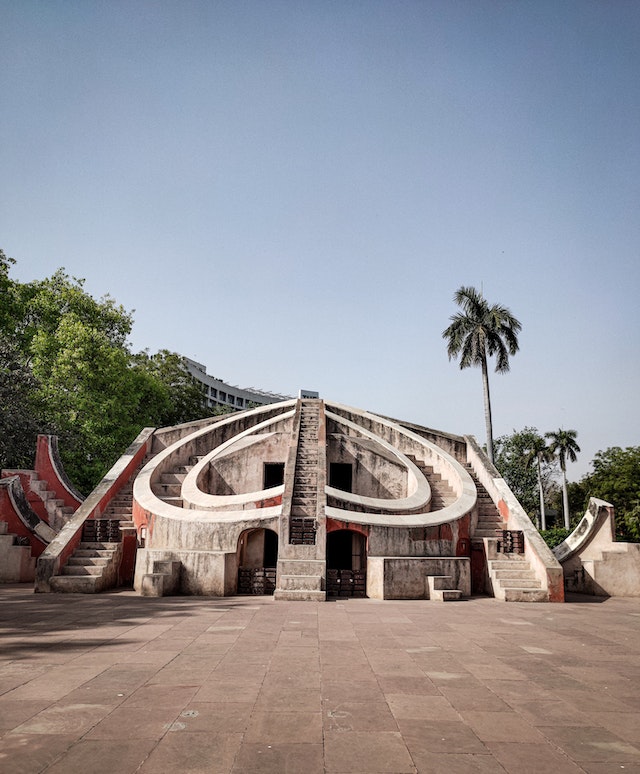
Jantar Mantar is an astronomical observatory located in the heart of Delhi. It was built in the 18th century by Maharaja Jai Singh II of Jaipur, who was a keen astronomer and wanted to create a scientific center for the study of the heavens. The observatory consists of a series of 13 architectural instruments, including a giant sundial, which were used to measure time, predict eclipses, and study the movements of the planets and stars.
Today, Jantar Mantar is a popular tourist attraction in Delhi, as visitors can explore the fascinating world of astronomy and learn about the scientific achievements of ancient India. The observatory is a testament to the country’s rich scientific heritage and the ingenuity of its people. A visit to Jantar Mantar is a must for anyone interested in science, history, or architecture.
14. Gurudwara Bangla Sahib
Gurudwara Bangla Sahib is a prominent Sikh shrine located in the heart of Delhi. The gurudwara is dedicated to Guru Har Krishan, the eighth Sikh guru, who lived in the bungalow that once stood on the site. The current gurudwara was built in the early 20th century and is known for its stunning architecture and serene atmosphere.
One of the main attractions of Gurudwara Bangla Sahib is its sarovar, a holy pool of water that is said to have healing properties. Visitors can take a dip in the sarovar and seek blessings from the Sikh holy book, the Guru Granth Sahib.
The gurudwara also offers langar, a community kitchen that serves free meals to all visitors, regardless of their religion or social status. This practice of serving food to those in need is an important tenet of Sikhism.
Gurudwara Bangla Sahib is a popular tourist attraction in Delhi, as it offers visitors a glimpse into the rich culture and traditions of Sikhism. The gurudwara’s peaceful atmosphere and charitable activities make it a must-visit destination for anyone seeking spiritual solace or cultural immersion.
15. Dilli Haat
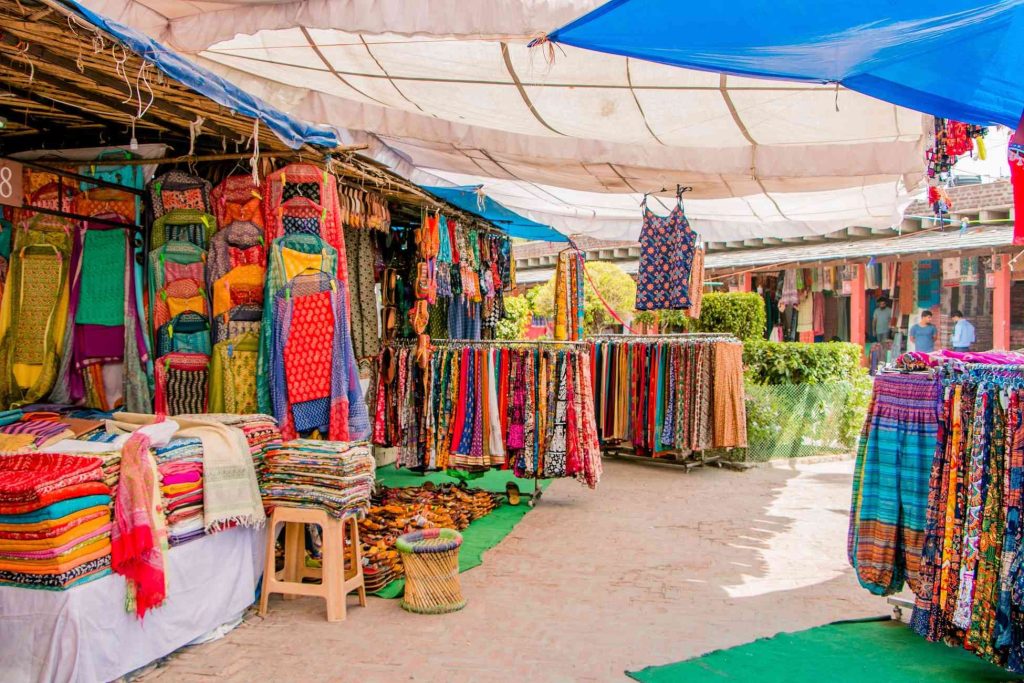
Dilli Haat is a vibrant open-air market in Delhi that offers visitors a unique shopping and dining experience. The concept of Dilli Haat was first introduced in the 1990s as a way to promote India’s traditional arts and crafts and provide a platform for rural artisans to showcase their work. Today, the market is a bustling hub of activity, with dozens of stalls selling everything from handmade textiles and jewelry to pottery and paintings.
In addition to shopping, Dilli Haat is also known for its food stalls, which offer a wide variety of regional delicacies from all over India. The market is a popular tourist attraction in Delhi, as it provides visitors with an opportunity to explore the country’s rich cultural heritage and sample its diverse cuisine.
16. National Handicrafts and Handlooms Museum
The National Handicrafts and Handlooms Museum, also known as the Crafts Museum, is a popular tourist attraction in Delhi that showcases India’s rich tradition of handicrafts and handloom textiles. The museum was established in 1956 and is housed in a complex of traditional-style buildings, featuring a mix of galleries, workshops, and performance spaces.
Visitors to the museum can explore a vast collection of objects, including textiles, pottery, jewelry, and woodwork, all of which represent India’s diverse cultural heritage. The museum also offers demonstrations of traditional crafts and workshops where visitors can learn about the process of creating these works of art. The National Handicrafts and Handlooms Museum is a must-visit destination for anyone interested in India’s rich history of handicrafts and textiles.
17. Hauz Khas Village
Hauz Khas Village is a trendy and vibrant neighborhood in South Delhi that has become a popular destination for locals and tourists alike. The area is known for its narrow streets, colorful buildings, and lively atmosphere, which is a stark contrast to the rest of the city.
The history of Hauz Khas Village can be traced back to the 13th century when it was developed as a water reservoir to supply the nearby Siri Fort. In the 1980s, the area was developed as a residential neighborhood, and in recent years, it has emerged as a hub for art, culture, and nightlife.
Today, Hauz Khas Village is home to a plethora of galleries, boutiques, cafes, and bars, which make it a must-visit destination for anyone looking to experience Delhi’s vibrant and eclectic culture.
18. Nehru Planetarium
Nehru Planetarium is a popular tourist attraction in Delhi, located in the heart of the city. The planetarium was established in 1984, and it is named after India’s first Prime Minister, Jawaharlal Nehru, who was a strong advocate for science and technology education in the country.
The Nehru Planetarium features a range of interactive exhibits, displays, and shows that are designed to educate visitors about astronomy and space science. Visitors can enjoy a range of educational shows, including a virtual tour of the solar system, a film on the birth and death of stars, and a 3D show on the mysteries of the universe. The planetarium is a must-visit destination for anyone interested in astronomy and space science.
19. ISKCON Temple
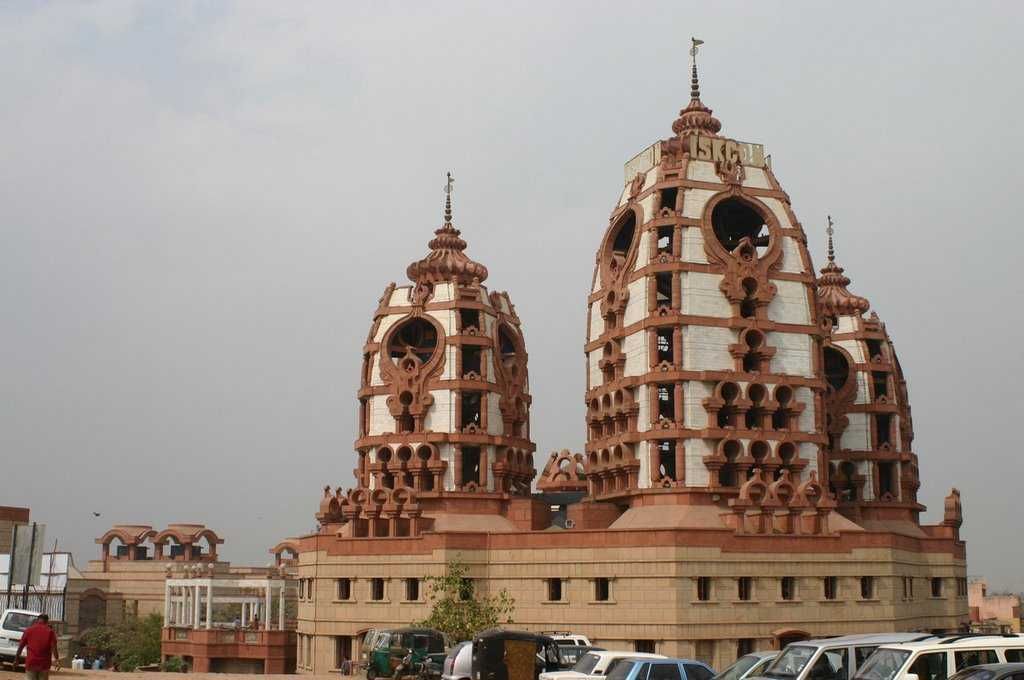
ISKCON Temple, also known as Sri Sri Radha Parthasarathi Mandir, is a popular tourist attraction located in South Delhi. The temple was established in 1998 by the International Society for Krishna Consciousness (ISKCON) and is dedicated to Lord Krishna and Radha.
The temple’s architecture is inspired by traditional Indian temple designs and is made of red sandstone and white marble. The temple features stunning intricate carvings and beautiful paintings depicting the life of Lord Krishna. Visitors can participate in a range of activities, including devotional singing, meditation, and spiritual discussions. The temple is a must-visit destination for anyone interested in spirituality and Indian culture.
20. Connaught Place
Connaught Place, also known as CP, is a popular tourist destination in the heart of Delhi. The area is named after the Duke of Connaught, and it was built in the early 20th century during the British colonial era. The circular market complex was designed by British architect Edwin Lutyens and features beautiful colonial architecture.
Today, Connaught Place is a bustling commercial and entertainment hub with a range of shops, restaurants, and bars. Visitors can explore the various colonial-era buildings and enjoy a range of cultural activities, including music and dance performances. The area is a must-visit destination for anyone interested in history, architecture, and shopping.
21. National Zoological Park
The National Zoological Park, also known as Delhi Zoo, is a popular tourist attraction located near the historic Old Fort in Delhi. The zoo was established in 1959 and covers an area of 176 acres.
The park houses a diverse range of animals, including tigers, lions, elephants, deer, and primates. Visitors can enjoy a range of activities, including guided tours, animal shows, and bird watching. The park is also home to a range of exotic bird species and features a beautiful lake. The zoo is a must-visit destination for anyone interested in wildlife and nature.
22. Sulabh International Museum of Toilets
The Sulabh International Museum of Toilets is a unique and quirky museum located in Delhi. The museum was established in 1992 by Dr. Bindeshwar Pathak, a social activist who has dedicated his life to improving sanitation and hygiene in India. The museum showcases the evolution of toilets and sanitation practices from ancient times to modern-day. It features a wide range of exhibits, including ancient toilets from Harappa and Mohenjo-daro, medieval commodes from Europe, and modern-day toilets.
Although it may seem unusual, the museum has become a popular tourist attraction in Delhi due to its informative and entertaining exhibits. It also highlights the importance of sanitation and hygiene, making it a must-visit destination for anyone interested in public health and sanitation.
23. Lodi Gardens
Summary
Each of these attractions offers a unique glimpse into Delhi’s history, culture, and spirituality. Whether it’s exploring the historic Red Fort or the towering Qutub Minar, or experiencing the peaceful atmosphere of the Lotus Temple or Gurudwara Bangla Sahib, visitors to Delhi & New Delhi are sure to have an unforgettable experience.














